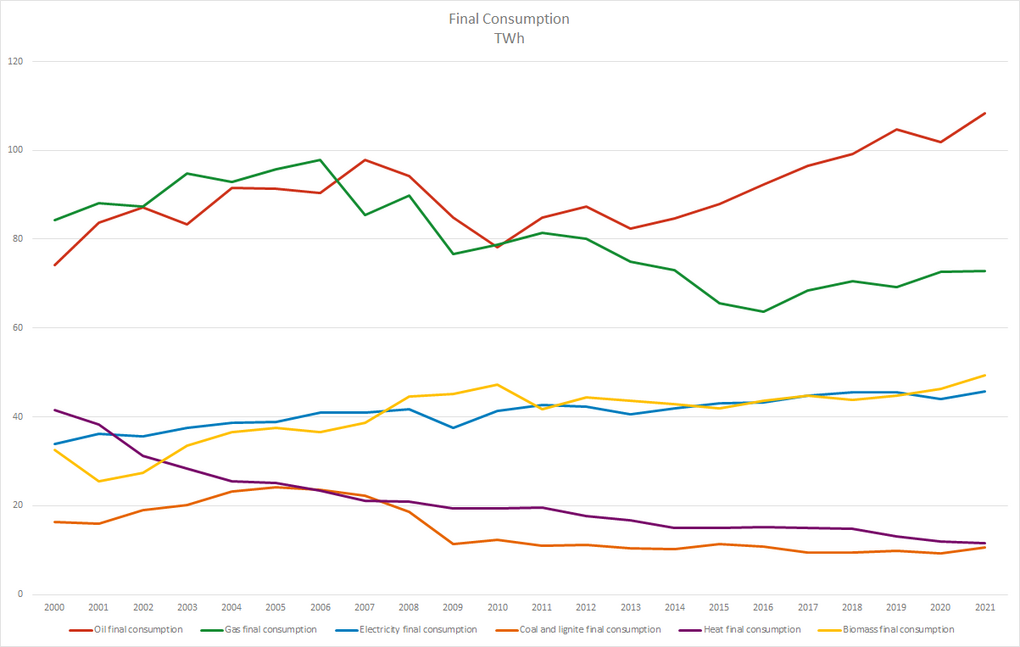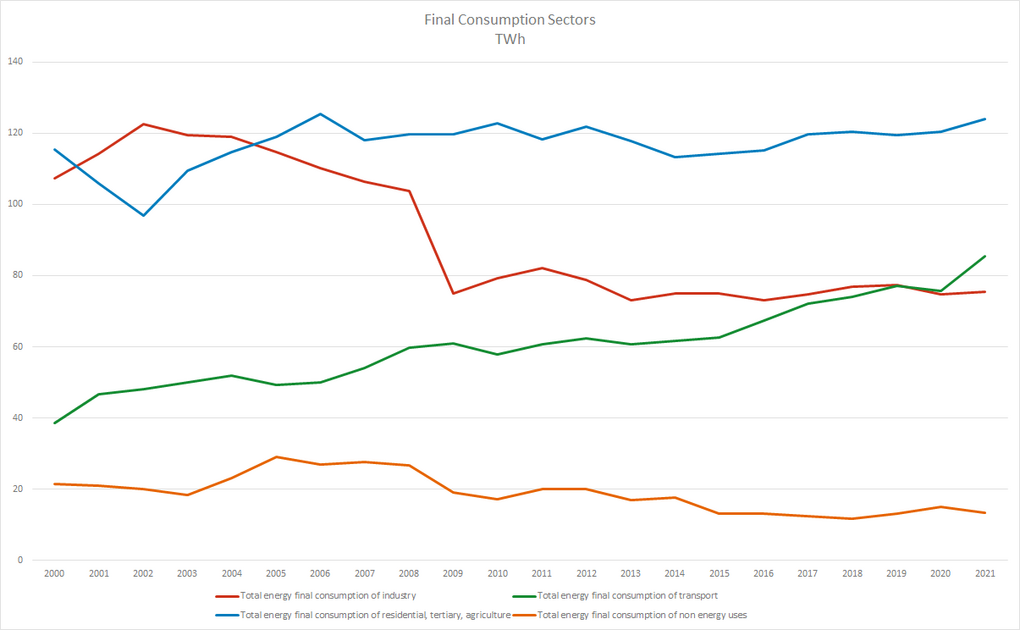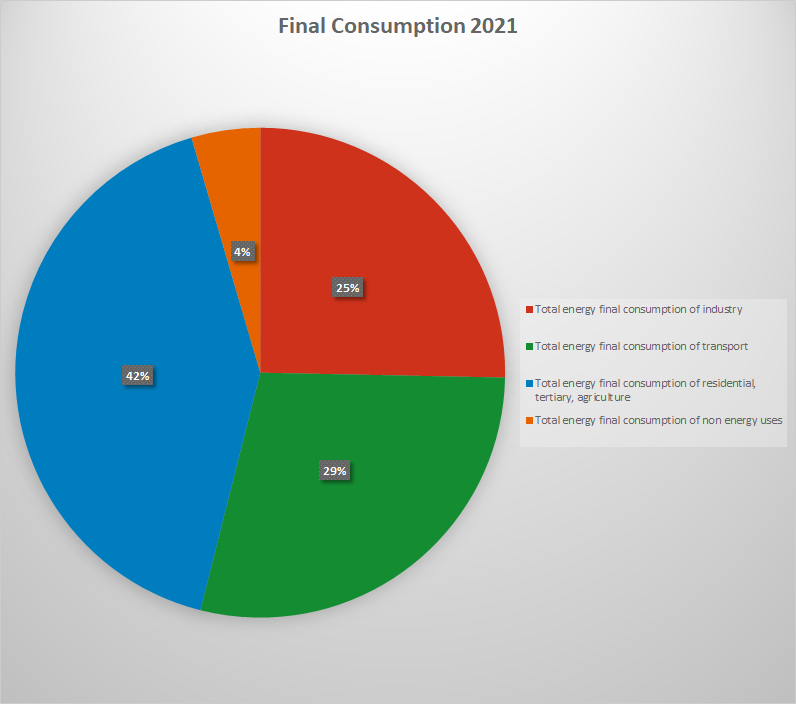Energy Demand
Despite the growing share of oil products, lignite still accounts for half of overall energy use. The energy consumed per person in 2020 is 2.3 toe, which includes 4 230 kWh of electricity, which is 20% less than the EU average.
The total energy usage increased by 3.4% to 15.8 Mtoe in 2021 after declining by 1%/year between 2017 and 2019. Between 2004 and 2014, it decreased by 3% annually, reaching 13 Mtoe, its lowest level since 2000, primarily as a result of the 2014 floods, which reduced lignite consumption by 23% in that year. After that, it recovered till 2017 (+5/6%/year).
In 2021, lignite will make up 50% of all consumption, with oil (22%), gas (13%), biomass (10%), hydroelectricity, wind energy, and power imports (5% each) following (2020). Oil now accounts for 22% of overall consumption, up from 11% in 2000. Since 2012, the consumption of oil products has fluctuated between 3.1 Mt and 3.7 Mt (3.4 Mt in 2021); it dropped sharply between 2006 and 2012 (-5.6%/year).
Since 2014, the amount of electricity consumed has increased marginally (+1.1%/year), reaching 29 TWh in 2020. (stable in 2020). Prior to that, the consistent upward trend between 2005 and 2011 (+1.5%/year) was followed by a downward trend between 2011 and 2014 (-1.7%). Between 2014 and 2018, gas consumption increased by 7.3%/year, however, in 2019, it decreased by 6.5% to 2.5 billion cubic meters.
Since 2010, the final energy consumption's proportion of fossil fuels has decreased slightly (from 34% to 32% for oil, from 12% to 10% for gas, and from 11% to 10% for coal and lignite), favoring biomass (from 10% to 16%); the proportions of electricity and heat have remained constant (24% and 8%, respectively).
Buildings (residential and services) account for 46% of final consumption (36% for households, 9% for services, and 2% for agriculture), followed by industry (24%, 31% including non-energy uses), and transport (22%). Since 2010, the shares of each sector in final consumption have mainly remained stable.
Between 2004 and 2014 the total energy consumption declined by 2.8%/year reaching 13 Mtoe, its lowest level since 2000 (2014 floods cut lignite consumption by 23%). Energy consumption has recovered since then, rising by 5% in 2019 to 15.3 Mtoe. In 2019, the residential sector accounted for the highest share of final consumption with 42 %, followed by the industrial sector with 25.8 %, transport 24.5 % and non-energy use with 7.9 %. In 2021 energy consumption per capita amounted to 2.3 toe.
In 2021, 42% of the Serbian Energy Consumption went into residential, tertiary, and agricultural consumption. Industry makes up 25% and transport both makes up 29% of consumption. 4% are used for non-energy purposes.
Source: Enerdata
Last update: 07 2023



